Are you trying to find the perfect key and lock combination but aren't sure what the proper terminology for the parts of a key is? Well, you've come to the right place. We've done the research to bring you this guide to the anatomy of a key so you can more easily communicate your needs.
- Bow
- Shoulder
- Blade
- Biting cuts
- Tip
First, it's important to note that there are different types of keys, and the parts involved can vary slightly depending on the style. Keep reading to learn more about each part of the key and the different key styles available.
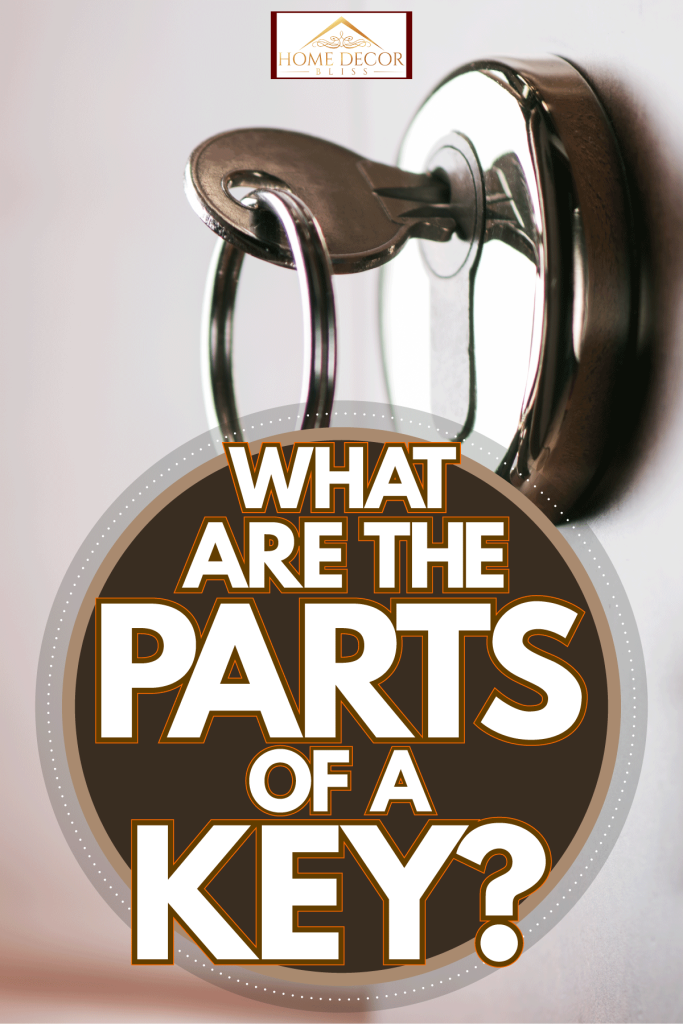
Why It's Important To Know The Parts Of A Key
Learning the anatomy of a key can give you an edge when trying to describe the style you're looking for. This will allow you to communicate more effectively with salespeople when you are shopping for locks and keys. It will also help you diagnose any issues you may have with keys that aren't working properly.
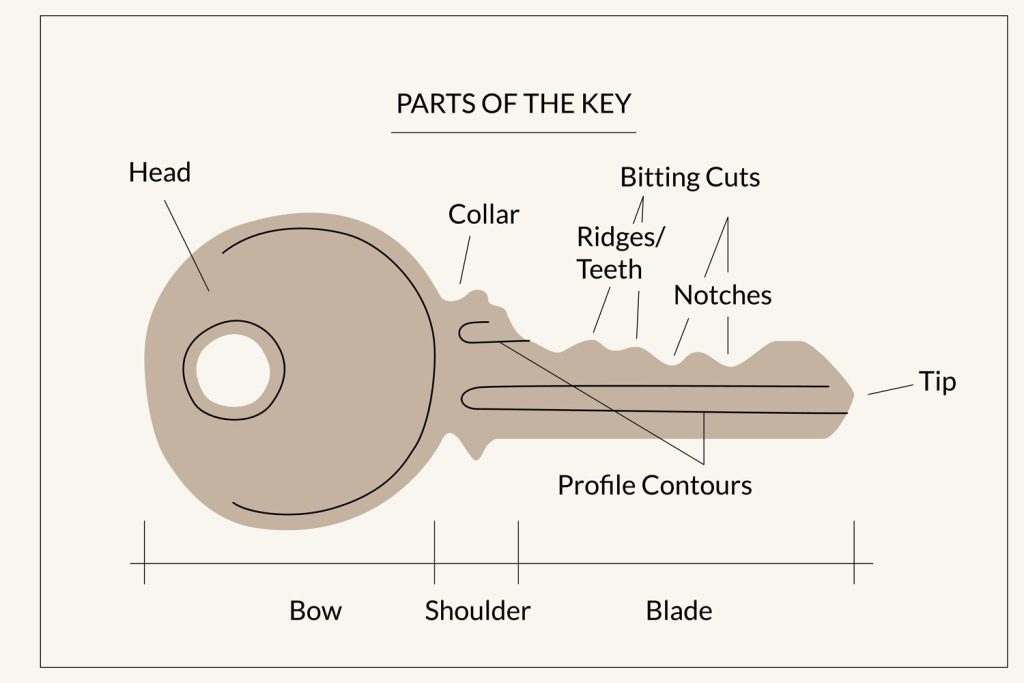
We may include affiliate links and curated AI content to highlight top design styles.
Different Parts Of A Key
Here we'll discuss the different parts of a key in more detail.
1. Bow
Also known as the head of the key, this is the portion that you grip with your fingers when using the key. It can be round or shaped and it may have a textured grip or decorative details on it. The bow often contains details about the cut of the key and the maker.
Mortise Lockset
This mortise lockset comes with a skeleton key that has a round bow with a decorative punched-out center. It fits doors 1 1/2" - 1 3/8" thick and comes in a beautiful satin nickel finish.
Click here to see this lockset on Amazon.
2. Shoulder
The shoulder, or collar, of a key, is where the head transitions into the blade. It serves as a stop to prevent the key from sliding too far into the lock. The shoulder also helps to ensure proper positioning for the grooves and notches cut into the edge.
3. Blade
The blade of a key is the portion that is inserted into the lock's tumbler. It holds the notches, contours, bitting, and tip, which is all the information that makes the key function. The cuts and grooves on the blade vary from key to key and determine which locks the key can open.
Leathercraft Lucky Line Sword Blank Key
This cool blank house key is shaped like a sword and can be cut to fit your lock at your local hardware store. You can find these keys with blank blades in all kinds of designs and shapes to fit your personality.
Click here to take a look at this blank key on Amazon.
4. Biting Cuts
Biting cuts are the contours carved into the blade of the key that will match the tumbler inside of the lock. Biting cuts include the notches and grooves on the edge of the blade as well as the depressions along the sides of the blade. These biting cuts come in various combinations that ensure your safety.
5. Tip
The tip of a key is designed to lift the pins inside the lock's tumbler, allowing the notches and grooves into the passage to open the lock. Its location at the end of the key makes it the first part you insert into the tumbler, making it integral to the design.
What Is The Top Of A Key Called?
The bow or head is considered to be the top of a key, and the tip is the bottom. The head of the key has an opening for a keyring which, when used, results in the tip hanging down.
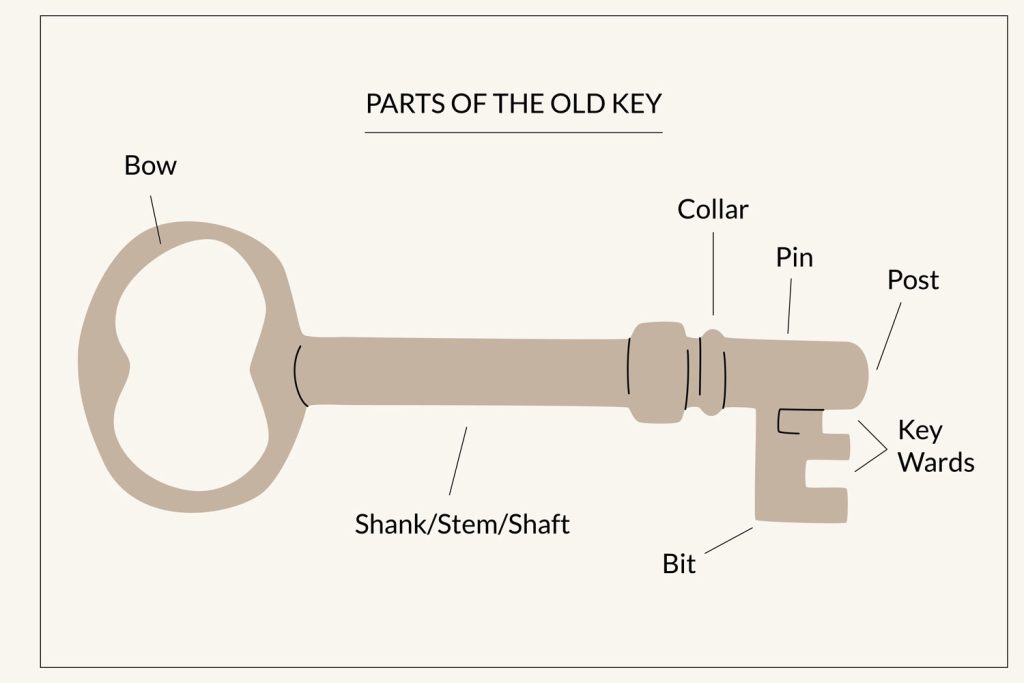
What Are The Parts Of An Old Key Called?
Old barrel keys have different parts than more modern keys. The head remains the same, and old keys still have a shoulder, although it's located further down the shaft and typically referred to as a collar. The parts of an old key are:
- Shank, stem, or shaft
- Bit
- Key wards
- Post or pin
Shank
The shank may also be referred to as the "stem" or "shaft." It provides the key with the length needed for the bit to reach the lock's tumblers. The shank sits between the head and the shoulder of the key.
Bit
The bit is the portion of the key that protrudes from the shank. It is the part of the key that engages the pins inside the tumbler to open the door. The bit has notches cut into it and sits between the shoulder and the post.
Key Wards
The key wards are the notches on the bit that fit into the lock and activate the tumblers. They determine which locks the key will work on. The wards are equivalent to the biting cuts found on more modern keys.
Post
The post may also be called the "pin." It sits at the very end of the key, is usually cylindrical, and is the first portion of the key to enter the lock. The pin works the same way as the tip of a machine-cut key by lifting the pins inside the tumbler and allowing the bit to enter.
What Are The Types Of Keys?
There are several other types of keys besides machine-cut keys and old barrel keys. They can be simple or complex depending on the needs of the application. The most common types of keys include:
- Machine-cut keys
- Barrel keys
- Multi-sided keys
- Abloy keys
- Magnetic keys
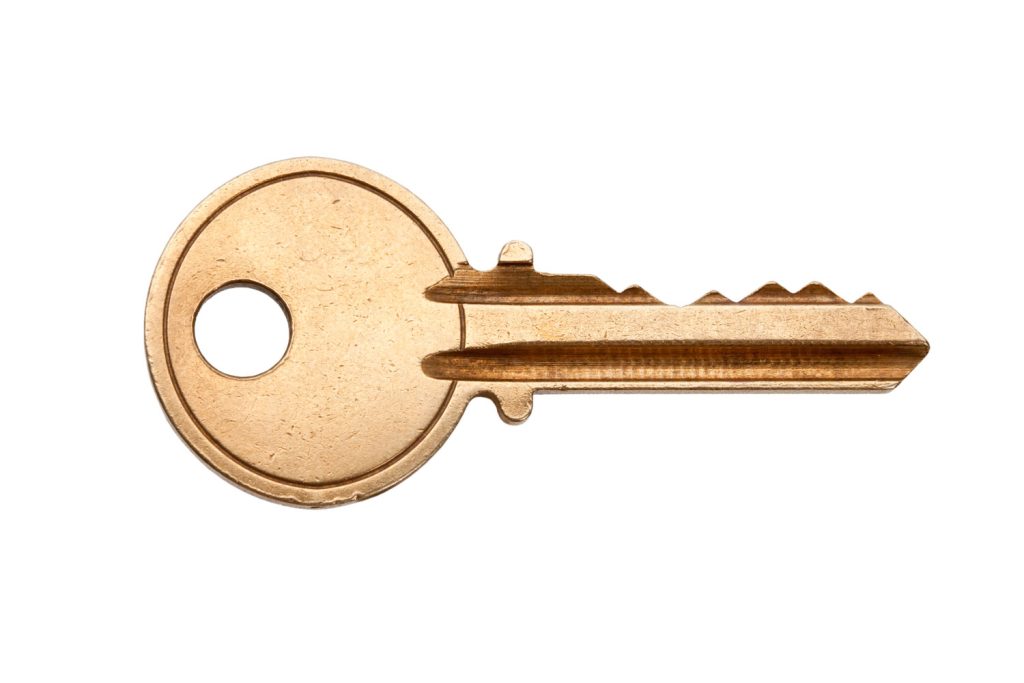
Machine-Cut Keys
Machine-cut keys are very common. These are easy to replicate and replace, and they provide relatively good security. Machine-cut keys are used on older model cars and in some homes.
Barrel Keys
Barrel keys are older keys that have a more elegant, decorative appearance. Often misidentified as "skeleton" keys, they do not serve the same purpose as a true skeleton key. The introduction of more secure locksets in the mid-1900s resulted in the barrel key losing popularity.
Rim Lock Set
This interior rim lock set includes a barrel key for an antique look and feel. You can choose the knobs separately, allowing you to customize the look to your home's needs. It comes in a variety of styles and sizes for different applications.
Click here to see this lockset on Amazon.
Multi-Sided Keys
Multi-sided keys have biting cuts on two or more edges to provide higher security. These keys are the most common type of key in homes today. Most hardware stores with key cutting machines can duplicate these keys easily.
Abloy Keys
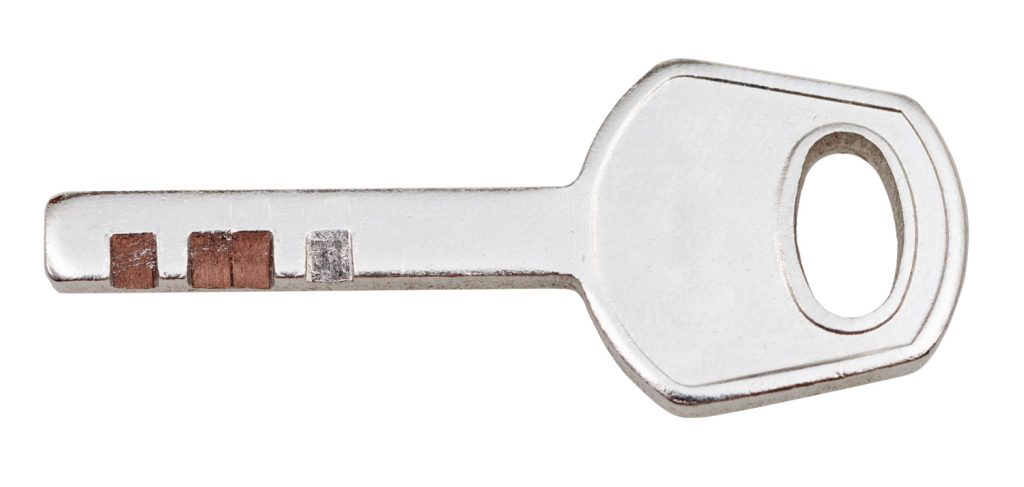
Abloy keys are very similar to multi-sided keys but have very different biting cuts. Abloy locks use discs instead of pins inside the tumbler, resulting in a key with round notches cut out instead of grooves and notches. These keys are most common in commercial and industrial applications.
Magnetic Keys
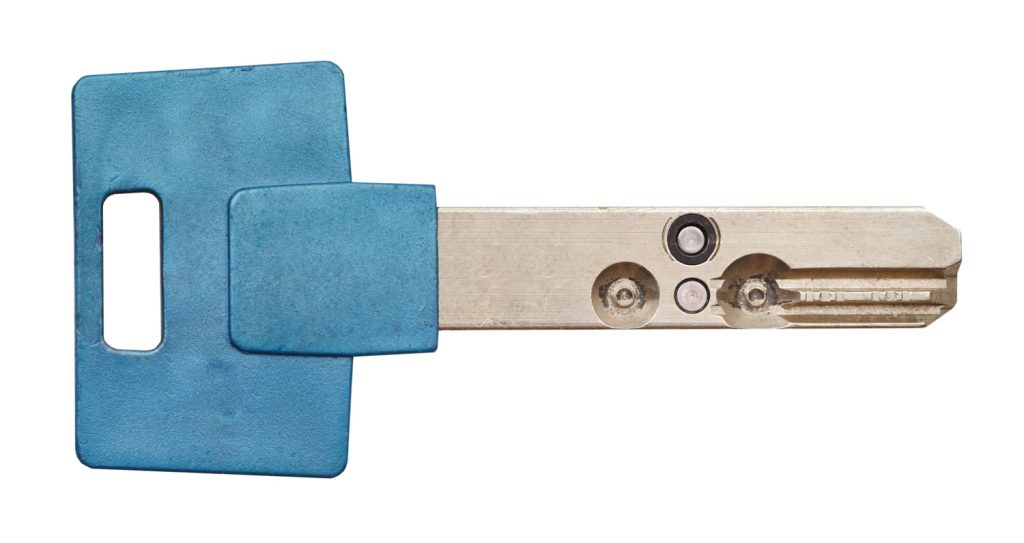
Magnetic keys can be similar in appearance to machine-cut or multi-sided keys. Just insert the key into the tumbler like any other key and it uses magnetism to push and pull the pins. Modern cars may use magnetic keys for doors and ignitions.
What Is a Skeleton Key?
A skeleton key is a type of barrel key that can open multiple locks. Back when barrel keys were common, it was standard to have a single skeleton key that was capable of opening every door in a home. Today you would have your doors keyed alike for a similar result.
Skeleton Key Set
This set of skeleton key reproductions comes with the most popular keys used for antique furniture. If you need to gain access to an old piece of furniture and lost the key, this is a good place to start. This set also makes a charming addition as home decor.
Click here to see this set on Amazon.
Key Takeaways

Now that you know all the parts of a key and all the different types of keys and locks available, you're ready to choose the right kind for your home. Don't forget to consider the security level of each style and how it will affect your privacy. Have fun updating your doors!
If you recently moved, read the post Should You Change Locks And Rekey A New House? for advice on when and how to change your locks.
If you're always losing your keys, read the post How High To Hang Key Hooks for help getting your keys hung up and organized.







